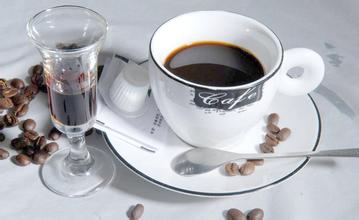Sitama Sunburn G1 Taste Chart-Sunburn Yesha Taste
Sidamo Solar G1 Taste Chart-Sunshine Yega Chevy
[sun Sidamo]: the bean body is smaller than Longberry and yellowish in green. in the sun drying field of Sidamo, the coffee is placed in the hemp net wooden frame, and the workers take turns in the sun to stir the coffee manually. Sidamo is usually marked with G4 exit. Washing Sidamo is mostly exported to G2 because of the improvement of the sun treatment process, so most of them export to G2 grade (Shakisso/Shakiso) located in the Guji area of Sidamo. The southern part of Oromia is adjacent to Sidama and Gedeo. There are many pits in this area, which were used to mine gold in the early days, so there are many potholes in this coffee growing area. This makes people dangerous when walking between coffee growing areas. Shakiso is a unique producing area of Guji / Cedamory, even in Cedamori, which is a remote area away from most coffee producing areas, and another famous local product is gold. Miners, land, race and other factors also caused unrest in the region in 2006. So the biggest problem facing this area right now is that ─ needs manpower to maintain the growing area and harvest coffee.
Ardi's raw beans are uniform in size and color, with a strong fruit aroma. The production cooperative is located in Guji District, Ethiopia's Sidamo province. Local farmers manually select moderately mature coffee cherries for sun treatment, turning the coffee cherries on the scaffolding every two hours during the 15-17 days or so to ensure that the coffee cherries are evenly and completely dried, followed by shelling and packaging. Unlike other Ethiopian sun-dried beans, Ardi selects them by hand before drying, rather than selecting them after they have been processed. The high scaffolding is also used in the drying process, which not only increases the air circulation, but also avoids the bad taste of coffee cherries in the drying process.
Next, use tall wooden frames or whole scaffolding for the sun to avoid the risk of beans smelling on the ground. In the process of exposure, take good care of the beans so that the coffee beans can be evenly exposed to water; every three to five days, coffee workers will manually screen out defective and moldy beans. Therefore, by the time the exposure is completed, before the beans enter the market to remove the peel and flesh, a bright crimson coffee cherry is already a grade with few defects.

Important Notice :
前街咖啡 FrontStreet Coffee has moved to new addredd:
FrontStreet Coffee Address: 315,Donghua East Road,GuangZhou
Tel:020 38364473
- Prev

Introduction to the varieties of Colombian Coffee beans produced by Grinding and Calibration
Huila is located in southern Colombia, one of the well-known special coffee producing areas, with an altitude of about 1200 to 2020 meters above sea level, with a planting area of more than 1.3 million hectares and an average temperature of 17-23C. Because of its outstanding flavor and aroma, it has become a world-famous special coffee. Medium and high
- Next

Introduction to the Origin of Coffee Flavor Grinding and Calibration treatment of Coffee Coffee from Sidamo and Yejasuffi
The Flavor Grinding Calibration method of Coffee Coffee from Sidamo and Yegashifi the origin of the coffee variety introduced that Ethiopia is a very important coffee exporter in the world, and the main producing areas are Sidamo, Yegashefi, Cochel, Hara, Jima and so on. Sidamo is the main producing area of boutique beans, and the coffee beans are famous for their excellent fruit characteristics and delicate and elegant flavor. The familiar Yega
Related
- Detailed explanation of Jadeite planting Land in Panamanian Jadeite Manor introduction to the grading system of Jadeite competitive bidding, Red bid, Green bid and Rose Summer
- Story of Coffee planting in Brenka region of Costa Rica Stonehenge Manor anaerobic heavy honey treatment of flavor mouth
- What's on the barrel of Blue Mountain Coffee beans?
- Can American coffee also pull flowers? How to use hot American style to pull out a good-looking pattern?
- Can you make a cold extract with coffee beans? What is the right proportion for cold-extracted coffee formula?
- Indonesian PWN Gold Mandrine Coffee Origin Features Flavor How to Chong? Mandolin coffee is American.
- A brief introduction to the flavor characteristics of Brazilian yellow bourbon coffee beans
- What is the effect of different water quality on the flavor of cold-extracted coffee? What kind of water is best for brewing coffee?
- Why do you think of Rose Summer whenever you mention Panamanian coffee?
- Introduction to the characteristics of authentic blue mountain coffee bean producing areas? What is the CIB Coffee Authority in Jamaica?

